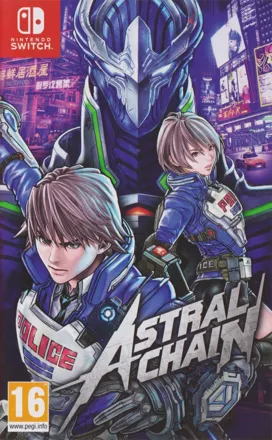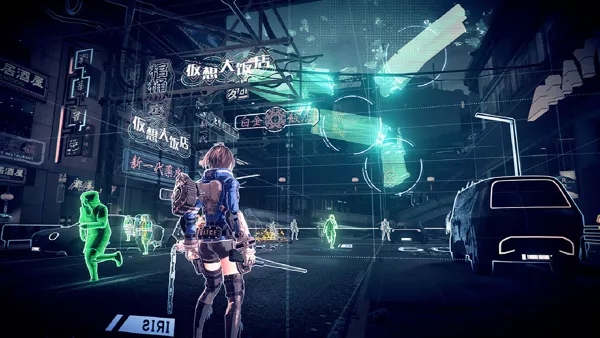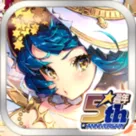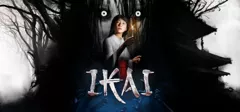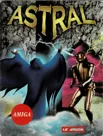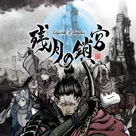Astral Chain
Official Description (Ad Blurb)
As part of a police special task force, it’s up to you to fight against mysterious, alien-like creatures who have invaded the world.
In the Ark, a multi-cultural city in the near future, disaster strikes when gates to another dimension suddenly appear! Dangerous creatures begin to emerge, attacking the people and polluting the land, and normal police forces are unable to compete with them. To stand up against these threats, a brand new, special police unit known as Neuron is formed.
Choose between two playable characters – one male, one female – on your adventure. The character you don’t choose also appears as your younger twin, and a fellow member of Neuron.
In order to resist the creatures, humanity developed a special weapon: the Legion. The Legion acts as your partner, and helps with your investigations. However, it’s in battle where the Legion shows its real ability...
Work together with the Legion and use all sorts of combat styles to fight your enemies. You could both attack the same enemy simultaneously, target different opponents, or send your Legion on the offensive while you support it with items. Use this synergetic action system to battle and explore together!
Making his directorial debut and known for his work as the game designer on NieR: Automata, Takahisa Taura is responsible for the concept and planning of ASTRAL CHAIN. Hideki Kamiya, creator of the Bayonetta™ series, is in charge of supervision. The character design is by manga artist Masakazu Katsura, creator of ZETMAN and Video Girl Ai.
Source: Nintendo.com Description
Spellings
- 異界鎖鏈 - Traditional Chinese spelling
- 애스트럴 체인 - Korean spelling
Groups +
Promos
Videos
See any errors or missing info for this game?
You can submit a correction, contribute trivia, add to a game group, add a related site or alternate title.
Credits (Nintendo Switch version)
470 People (461 developers, 9 thanks) · View all
| Director | |
| Producer | |
| Co-Directors | |
| Supervision | |
| Character Designer | |
| Scenario | |
| Scenario Review | |
| Akira Howard, Player (Male) | |
| Akira Howard, Player (Female) | |
| Yoseph Calvert | |
| Jena Anderson | |
| Harold "Hal" Clark | |
| Olive Espinosa | |
| Brenda Moreno | |
| Marie Wentz | |
| Jin Wong | |
| Maximilian Howard | |
| Alicia Lopez | |
| Kyle Merkulov | |
| Japanese Voice Cast | |
| [ full credits ] | |
Reviews
Critics
Average score: 87% (based on 17 ratings)
Players
Average score: 3.7 out of 5 (based on 8 ratings with 1 reviews)
The Good
* Unique, deep combat and upgrade systems
-
Impressive scale and spectacle for the system
-
Fun puzzle, exploration, and investigation elements
The Bad
* Performance issues -
Underwhelming story
-
Boss battles aren't as fun as standard fights
The Bottom Line
While 2020 may be seriously barren in terms of major first party releases past Animal Crossing, there’s no denying that 2019 was a pretty solid year for the Nintendo Switch when it came to big games that you just couldn’t play anywhere else. Most of last year’s top Switch exclusives such as Pokemon Sword and Shield, Fire Emblem Three Houses, and Yoshi’s Wooly World were all part of long-running, established franchises. However, the most unusual Nintendo release from 2019 has to be Astral Chain, a brand new IP developed by famed Japanese cult developer Platinum Games.Astral Chain is an action game with RPG elements set in a post-apocalyptic future. The game takes place on an artificial island called “The Ark” decades after a mysterious supernatural force known as the corruption seeped through from the Astral Plane into our world. This forced the remnants of humanity to crowd onto the ark, which sits in a remote location out in the middle of the Pacific Ocean. It was only a matter of time, however, as the Corruption eventually reached the city in the form of an event which infected the population with Redshift, a disease that transforms the infected into creatures called “Chimeras”. Thus, a task force within the city’s police called “Neuron” was formed to fight off threats related to the Chimeras.
The player takes control of one of the Howard siblings, the progeny of one member of the Neuron Task Force, both of whom have decided to follow in their father’s footsteps. The one the player chooses ends up becoming the typical Nintendo silent protagonist, but the other is referred to as “Akira” and is fully voiced within the game’s many, many cutscenes, becoming an extremely important character in the overall plot.
Astral Chain is a game that needs a lot of time to really sink its hooks into you. It’s not the kind of game that immediately grabs you, rather it slowly unfolds new layers of its complex combat system, investigation system, and background lore. One thing that might throw some people for a loop is just how cinematic and movie-like this game feels for a Nintendo published game. There are an awful lot of cutscenes, and there are times when the game seems to be unable to get out of its way. Honestly, I was almost falling asleep in the early parts as I had to sit through the seemingly endless conversations and tutorial messages. Even right up until the very end of the game, Astral Chain is always introducing new gameplay mechanics and features.
The gameplay of Astral Chain has the player working many aspects of being a cop. Sure, for a good portion of the game, you’ll ultimately end up fighting many different types of chimeras with the assistance of your trusty legions. However, the game also makes time for plenty of other types of gameplay, such as investigation, catching criminals, and platforming to reach out-of-the-way places.
Most chapters start with a slower-paced, exploratory section where you can solve quests, investigate chimeric activity, and platform to reach remote areas at your own pace. Your character can make use of a detective-vision like mode called “Iris” which can be used to highlight important objects as well as investigate drone cameras and chimera trails. The Iris can also be used to read the weight, height, and age of various NPCs, which actually comes in handy in a few side quests.
Due to plot-related reasons which I won’t go into here, your character is uniquely attuned to using the Legatus, meaning that they can utilize multiple Legions. There are five in all, but you’ll need to fight them first before subduing them. Each Legion has their own fighting style and special abilities. You’ll often need to make use of the various abilities to solve the game’s numerous puzzles or reach areas you can’t get to alone.
When combat actually starts, you can call your Legion and send it out to fight chimeras and other enemy types. You can dodge or attack in different timing and holding combinations to utilize different combos. There are three different types of weapons you can utilize and they all have their specific uses and combo animations, so switching is highly encouraged. While in combat, you have the option to wrap the Legion’s chain around enemies, binding them in place and enabling you to bring extra damage. You can also use the chain to block certain enemy charging attacks. Each Legion has a special ability that can be used by pressing the L button, and using them is crucial not just for combat but also environmental navigation. In fact, most of the early missions have areas that you can only reach using certain Legions, which strongly encourages replays.
Each Legion offers its own skill tree, and as you use the Legion more you’ll be able to unlock the more remote parts of the tree. Legions can be upgraded with various skills, two of which can be equipped at any time. You can also outfit Legions with “Ability Codes” which grant passive bonuses, but these are not especially useful.
My main complaint with the combat system is that fights with more humanoid-sized enemies tend to be much more fun than the massive bosses which frequently punctuate the mid and endpoints of each chapter. If I’m facing against several enemies around my size, I can chain-bind and crowd-control them like nobody’s business, but bosses are a very different story in this game. The camera during these fights can be difficult to follow, and some of them output attacks that are next to impossible to walk away from unscathed. They also go on for far longer than they really need to, especially the final boss in particular. The game’s constant fighting can become exasperating, so you’ll want to take plenty of breaks when playing.
There’s always a slight sense of jank with how Platinum Games regularly play, and this is no exception. Jumping can be finicky, as if you end up colliding with a piece of scenery during the jump, you’ll just end up falling instead of actually jumping to the location you chose. The camera is sometimes extremely temperamental, particularly when directly controlling certain legions. Certain legion abilities such as the Sword Slash are tough to use in a pinch since they will often pin you to the spot. Using potions in battle can also be a bit frustrating to work with, as you need to be perfectly still for a second for them to take. Once you learn to work around these quirks the game becomes a lot of fun, but you definitely have to get used to a fairly complex, button-heavy control scheme at first.
While the combat system and puzzles are mostly excellent, the game is a bit weak in terms of its story. The game spends so much time setting up various characters and filling in the backstory for how The Ark came to be that it’s honestly pretty impressive. It feels like watching an anime. However, the actual plot this game tells is in the end confusing and underwhelming. The game attempts to deliver dramatic moments and huge twists, but it all feels extremely forced and confused. For every moment that is brilliant (I adored all of the stuff revolving around Lappy, which is the Ark’s police mascot dog), there are even more that just don’t land how they are intended. By the time I reached the end, I had very little grasp on what the villain’s motivation was beyond “oh, this is what 90 percent of anime villains try to accomplish”. It’s a shame that this game is held back by its story, as it had a real chance to do something a bit different from other Nintendo published games.
Graphically, Astral Chain isn’t a patch on what the competition puts out, but in the context of the Nintendo Switch’s more limited capabilities it still offers a pleasing sense of spectacle. The game has an extremely strong anime-vibe in its cel-shaded visuals making use of bold red, blue and purple colors. While not as impressive as the recent Final Fantasy VII Remake on PS4, the designs are highly comparable to that game, especially the cyberpunk-inspired city squares. Boss fights are often massive and over the top, and the Astral Plane offers a surreal, brutalist contrast to the cyberpunk city of the Ark. If you look close, you can definitely see some of the shortcuts Platinum used to get this game onto the Switch. Some faded textures and objects have a dithered look to them, and there seems to be some sort of dynamic resolution throughout the game. The enemies have a very jagged, low-poly look which complements the art style, and the draw distance is moderate to accommodate the smaller environments.
In spite of all of the care taken to optimize this game for the Switch, it’s not uncommon to see the game drop to around 15 frames per second. This happens particularly in the open hub areas with lots of people running around. The good news is that the vast majority of the fights take place in cordoned off locations or in the Astral Plane, so the performance issues don’t hurt the experience as much as it seems. However, those who are sensitive to such frame drops may want to investigate the gameplay first to see if they can tolerate it.
Musically, Astral Plane features the typical sort of selections you might find on an anime TV show, including opening and closing songs with vocals, hard rock and techno themes during battles, and soft, ambient music during quite or tense moments. Most of the tracks are find but they don’t really stand out from the overall presentation.
The voice acting is another story entirely. You can clearly tell that the voice actors have been chose from those who primarily dub anime for English audiences, as all of the actors have that strange, cheesy vibe you get from dubbed shows, with the lines hardly matching the lip animations of the characters. You can at least change the voices to Japanese to complete the anime-style presentation.
Astral Chain is one of those solid games that I’m glad I played, but I’m not sure I completely love. Some aspects of the game just felt tedious or overdone, and the story doesn’t quite deliver what it intends. Thankfully, it is saved by a mostly great combat system that is highly unique, as well, as some fairly cool environments to explore. If these kinds of action games are your bag, or you happen to be a die-hard fan of the anime aesthetic, you’re sure to fall head-over-heels for Astral Chain, but for me it was simply a pleasant experience.
Nintendo Switch · by krisko6 (814) · 2020
Analytics
Upgrade to MobyPro to view research rankings!
Identifiers +
Contribute
Are you familiar with this game? Help document and preserve this entry in video game history! If your contribution is approved, you will earn points and be credited as a contributor.
Contributors to this Entry
Game added by Rik Hideto.
Game added August 30, 2019. Last modified March 7, 2024.
